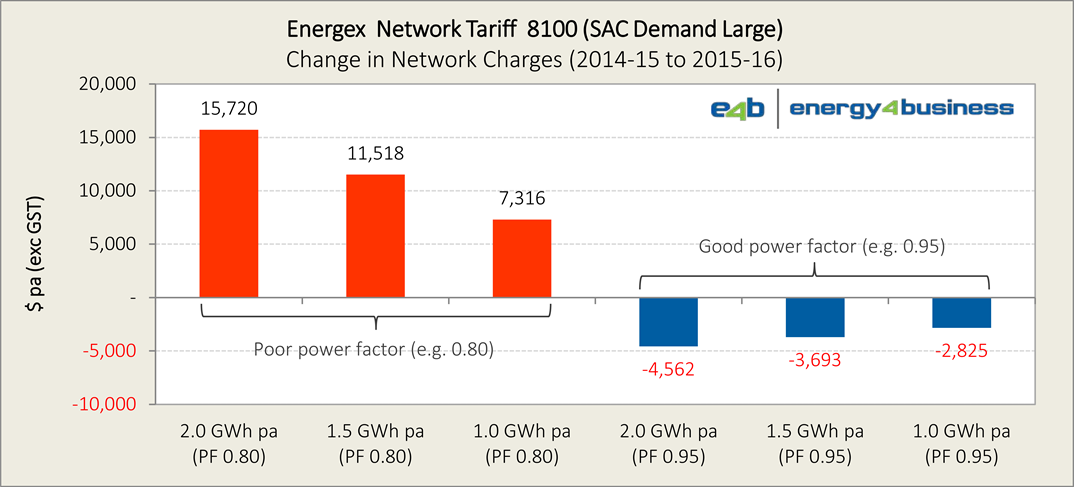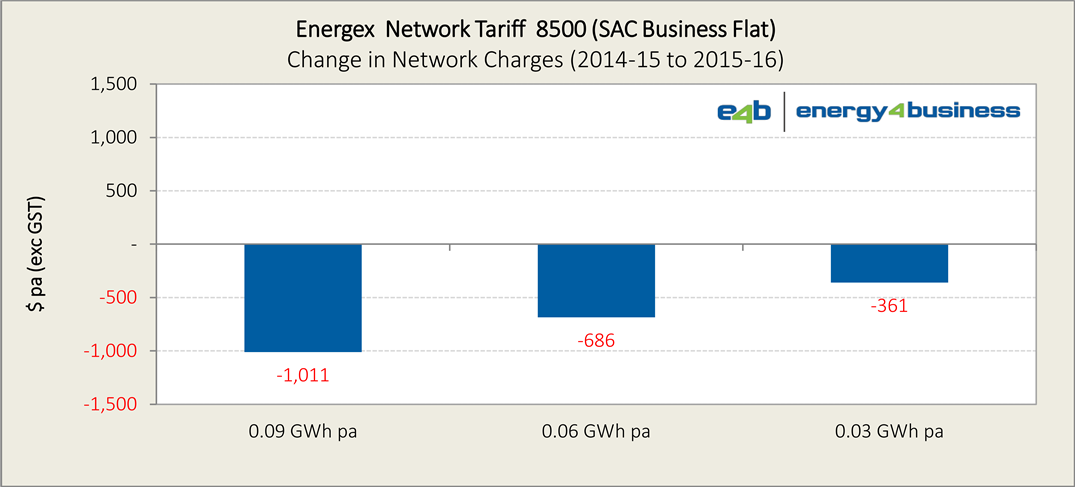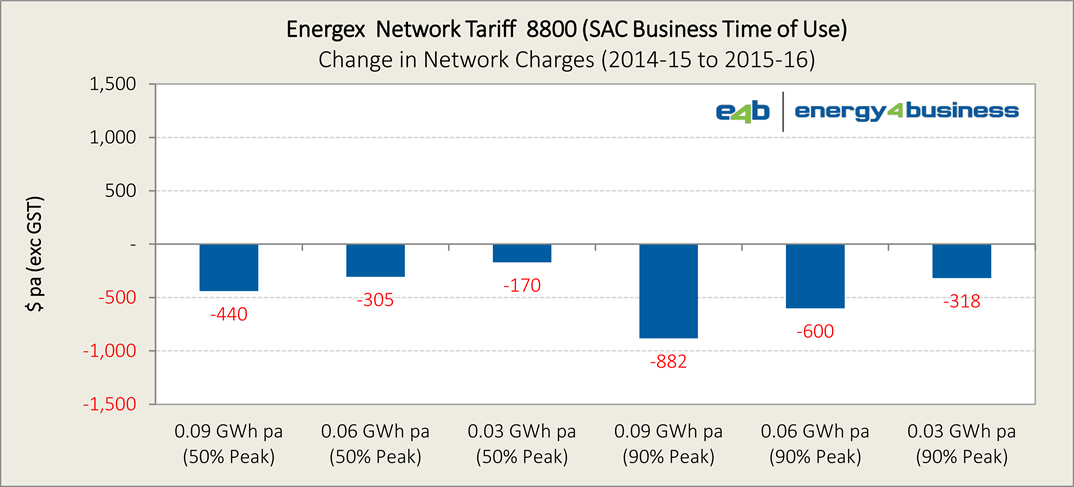Energex Network Tariffs
Energex Annual Pricing Proposal – 2015-16
Energex has released its draft Annual Pricing Proposal for 2015-16. This proposal contains Energex network tariffs for the 2015-16 financial year. A copy of the full proposal can be viewed on the AER’s website here.
Based on the draft tariffs, small business customers in the Energex territory can look forward to some welcome relief from rising energy costs, with network charges decreasing by between 4% and 9%.
However, the news is not so good for larger Energex customers connected to a demand based network tariff. As of 1 July, demand charges will be based on maximum monthly demand measured in kilovolt amperes (kVA). Accordingly, customers with a poor power factor will experience a significant increase in their network charges. For customers on the Demand Small tariff with a particularly poor power factor, these increases could be as high as 20%.
Customers with a poor power factor should assess the merits of installing a power factor correction (PFC) system to mitigate against these cost increases. Depending upon the energy usage and demand characteristics of the site, the payback on PFC systems is usually between 1 and 3 years.
Tariff 8100 – Demand Large
The cost impact on customers assigned to this tariff will depend upon the power factor for the site. Previously these customers incurred demand charges based on maximum demand for the month measured in kilowatts (kW). From 1 July 2015, these charges will take account of the reactive power supplied to the site, that is, demand charges will based on maximum demand measured in kilovolt amperes (kVA).
Customers with a poor power factor (e.g. ~ 0.80) will see their network charges increase by around 8-9%; and customers with an especially poor power factor (e.g. ~ 0.75), will see cost increases of around 12-13%.
Customers with an average power factor (e.g. ~ 0.90) will see a very minor increase in their charges (less than 1%), and sites with a good power factor (e.g. 0.95) will actually see their network charges fall by around 3%.

Tariff 8300 – Demand Small
As per Tariff 8100, the impact on these customers will depend upon power factor, as demand charges will now be based on demand measured in kVA.
Customers with a poor power factor (e.g. ~ 0.80) will see their network charges increase by around 9-13%; and customers with an especially poor power factor (e.g. ~ 0.75), will see cost increases of around 13-18%.
Customers with an average power factor (e.g. ~ 0.90) will see cost increases of around 1-5%. Customers with a good power factor (e.g. 0.95) will see minor cost increases of less than 2%, with smaller users enjoying reductions of around 2-3%.

Tariff 8500 – Business Flat
Network charges for customers on this small business tariff will reduce by around 9%. This reduction should be reflected in the QCA’s regulated retail tariff determination for 2015-16. Standard retailer pricing typically follows the regulated tariff, so customers should see a reduction in their retail energy charges of around 4-5%* from 1 July 2015. (* represents the estimated impact on the total retail tariff from a reduction in the network charges component of that tariff).

Tariff 8800 – Business ToU
Network charges for customers on this small business time of use tariff will reduce by around 4-7%. The level of savings will depend upon the split between peak and off-peak usage, with customers with a higher proportion of peak usage enjoying larger cost reductions. As per Tariff 8500, standard retailer pricing typically follows the regulated tariff, so customers should see a reduction in their retail energy charges of around 2-3%* from 1 July 2015. (* represents the estimated impact on the total retail tariff from a reduction in the network charges component of that tariff).

CAC Tariffs
Larger customers on CAC Tariffs with site-specific pricing should contact e4b directly for advice on the impact of tariff changes on their costs.
Contact us for advice on the impact of these changes on your business to find out if Power Factor Correction may be suitable for your site as a means of mitigating against increases in network charges.
